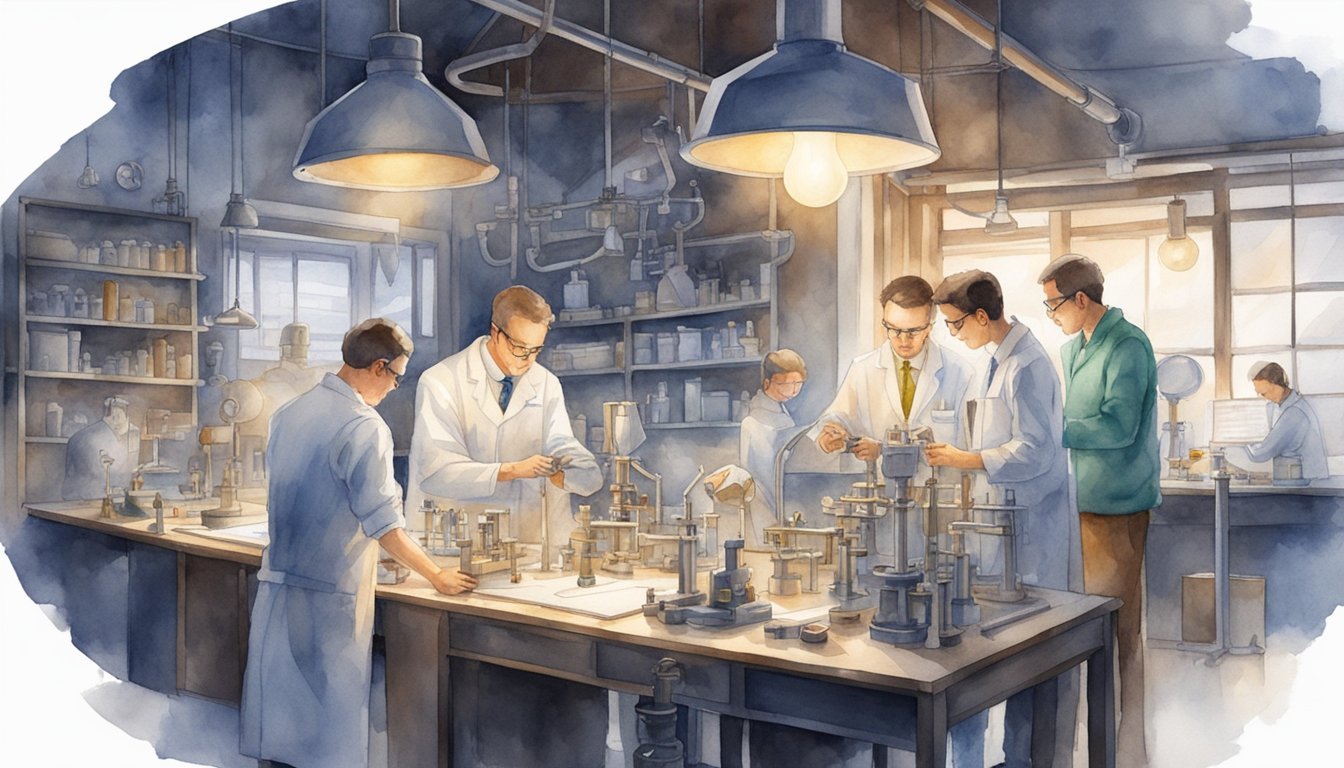Foundations of Science and Engineering

The foundations of science and engineering are built upon the continuous pursuit of knowledge, from pivotal historical milestones to recent modern advances that have shaped our understanding and capability to innovate.
Historical Milestones
In the journey of scientific discovery and engineering feats, specific milestones have set the stage for future advancements. The Printing Press, invented by Johannes Gutenberg in the mid-15th century, revolutionized the way information was disseminated, paving the path for the spread of knowledge. Another significant invention, the Wheel, dates back to the Neolithic period and remains one of humanity’s most profound engineering successes, touching virtually every aspect of modern life.
Two figures stand out in the realm of scientific thought: Thomas Edison, whose prolific innovations include the practical electric light bulb, and Albert Einstein, whose theory of relativity transformed the understanding of time, space, and gravity. Contributions by such figures were not mere inventions but represented seismic shifts in the underpinnings of science and technology.
Modern Advances
The modern era continues to witness an exponential growth in scientific discoveries and engineering marvels. Innovative technologies and groundbreaking research emerge at an unprecedented pace. This surge can be attributed to the use of advanced tools like the Compass, an ancient invention crucial for navigation, now replaced by sophisticated position tracking systems.
Today’s Researchers are at the frontline, constantly pushing the boundaries of what is possible, often working in interdisciplinary fields that combine science and engineering to produce Innovations. These innovations not only reflect human ingenuity but also a deep understanding of scientific principles applied to solve complex problems.
Science and engineering are continually evolving, driven by the relentless curiosity and problem-solving skills of humans, laying down the building blocks for our future.
Explorations of Nature and Technology

The intertwining of natural discovery and technological advancement offers insights into the biodiversity of our world and extends our reach into the mysteries of outer space. Through these explorations, we uncover the inner workings of life on Earth and beyond.
Biodiversity and Ecosystems
Recent studies in biodiversity reveal how fish navigate complex ecosystems using subtle changes in ocean currents, affecting carbon dioxide levels and, consequently, climate change. Intriguingly, the mimicry of camouflage strategies observed in some predators has inspired technological advances in material sciences. Biologists have also made progress in understanding how bacteria contribute to DNA repair, a process critical for sustaining life forms from the smallestial microorganisms to the human liver and brain. Research into proteins regulating white blood cells has opened potential pathways for cancer treatments, reflecting nature’s complexity and its applications to human health.
Discoveries by paleontologists, like newly identified fossils, shed light on ancient civilizations and the evolution of the heart in complex organisms. Archaeologists have documented early instances of art in human history, echoing today’s digital creations through apps and the internet.
Technological Innovations and Outer Space
The field of space exploration has been revolutionized by technologies such as the Mars Rover, which sends detailed analyses of Martian soil back to Earth. The deployment of the Event Horizon Telescope has captured the first images of black holes, furthering our comprehension of these enigmatic celestial entities. Cutting-edge technology of the LIGO project has made it possible to detect gravitational waves, opening a new window into the cosmos.
Astronomers utilize advanced camera systems and the power of CRISPR-Cas9 gene editing to study exoplanets and potentially genes responsible for adaptation in extreme environments. This research not only advances our knowledge but also ignites the imagination regarding life in the universe. The application of surface tension principles in the design of airplanes demonstrates how observation of nature can improve modern engineering.
On a smaller scale, microplastics represent a growing concern within Earth’s ecosystems, spurring innovation in filtration and decomposition technologies. Refined imaging has revealed the intricate structure of proteins, critical in the fight against diseases and in understanding the biological “machinery” within our cells.
Here are some relevant pieces of information from the aforementioned search results:
- Biomimicry or biomimetics is the practice of modeling artificial products after biological processes and has led to numerous new inventions inspired by nature. For more details, refer to the Smithsonian Magazine.
- The fusion of technology and observations in nature has the potential to unlock new methods to address environmental and health challenges. This is evident in the Scientific Revolution’s drastic changes, where a new view of nature actually revolutionized scientific thought.
- Space exploration has benefitted from technologies like the Event Horizon Telescope’s imaging capability, which provides unprecedented views into the fabric of our universe.

